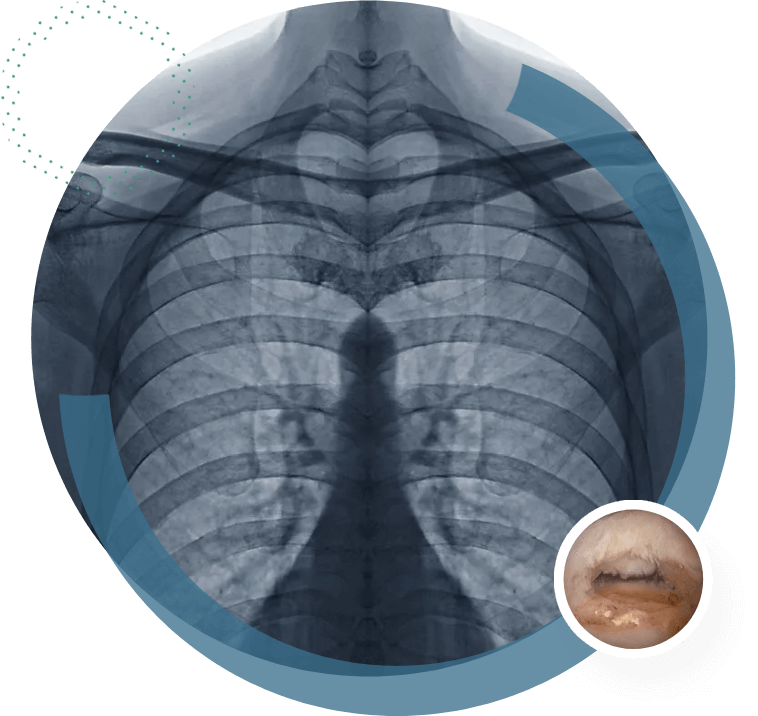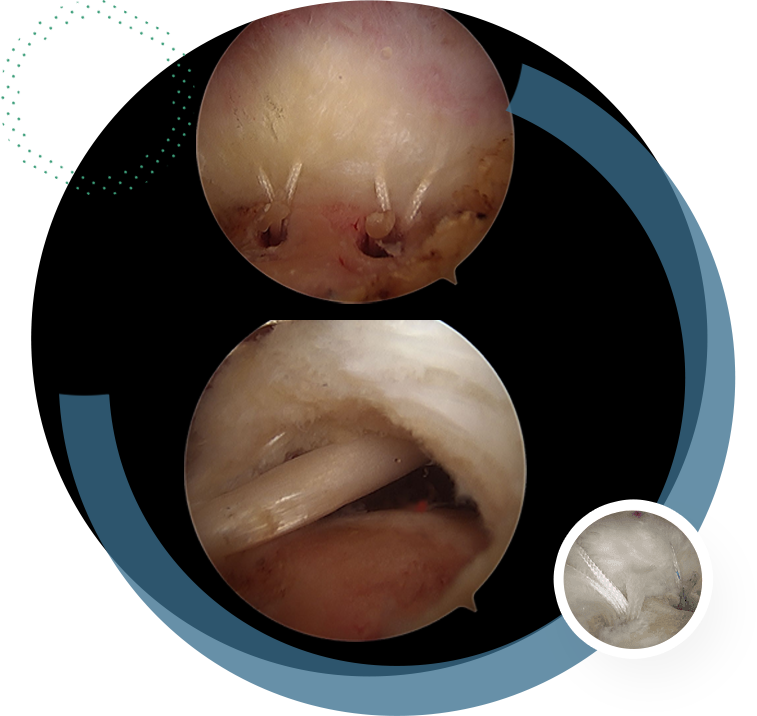
Shoulder Arthroscopy for Rotator Cuff Tears
Rotator cuff tears are common injuries and are often treated with shoulder arthroscopy, a minimally invasive surgical approach that reduces post-operative pain and recovery time. Continue reading to learn more, or schedule an appointment with Dr. DuBois to determine if you are a candidate for arthroscopic rotator cuff repair.
Because of the shoulder’s complex anatomy, athletes engaging in repetitive upper-body motions or upper-body training are at a greater risk of experiencing shoulder problems. Repetitive, high-energy activities, such as lifting heavy weights overhead or pitching fastballs, exert high amounts of force on the shoulder, eventually damaging the supporting components.
Many people will experience problems with their rotator cuff, a set of muscles and tendons responsible for moving the arm through its wide range of motion. Some rotator cuff injuries can be treated effectively through conservative treatment options, such as physical therapy and rehabilitation, activity modification, anti-inflammatory drug treatment, or Platelet-Rich-Plasma injections. Other patients may opt for arthroscopic surgery, which tends to produce good results without many negative post-operative side effects associated with traditional open surgery.
Understanding The Shoulder & Its Components
To better understand how rotator cuff damage occurs, it is helpful to understand the basic anatomy of the shoulder joint. Continue reading to learn how the shoulder’s components work together to move and rotate the upper arm.
The shoulder is a ball-and-socket joint, much like the hip, with the main joint comprised of two bones: the humerus, or upper arm bone, and the scapula, or shoulder blade. The rounded top of the humerus (humeral head) fits within a shallow socket on the scapula known as the glenoid fossa, forming an unstable joint commonly dislocated. A ring of cartilage, known as the labrum, lines the lip of the socket to help prevent dislocation and provide additional depth.
A set of muscles, collectively known as the rotator cuff, attach to the main shoulder joint and hold the humeral head within the glenoid fossa. The four muscles begin at the humeral head and attach to the shoulder blade, playing a key part in lifting and rotating the arm through its wide range of motion.
Tearing the Rotator Cuff
The rotator cuff is integral in most upper body activity and weakens the shoulder significantly when injured. An injured rotator cuff limits a patient’s range of motion, causes pain during movement, and makes simple tasks, such as buttoning a shirt, painful and difficult.

Treatment Options for Rotator Cuff Tears
Many patients are able to treat their rotator cuff injuries non-surgically through a series of conservative treatments that aim to alleviate the stress placed on the rotator cuff muscles by strengthening the surrounding components. Conservative treatments include, but are not limited to:
While conservative treatments avoid complications that might arise from surgery, they may not completely solve the issue. Because the injury is not being actively treated, the tear size may also increase over time. Additionally, due to personal concerns, many patients may not see activity modification as a feasible solution.
Arthroscopic Rotator Cuff Repair
When surgery is indicated, rotator cuff tears are best treated arthroscopically. This minimally invasive surgical approach allows patients to return to activities more quickly, with less post-operative pain. Shoulder arthroscopy is typically performed on an outpatient basis, meaning patients can return to their homes the same day of surgery to rehabilitate more comfortably.
Compared to open surgery, arthroscopic rotator cuff repair provides the following potential benefits:

Arthroscopic Rotator Cuff Repair Arthroscopic Surgery: The Procedure
Arthroscopy allows for the benefits of minimally invasive surgery because of its novel use of fiber-optic camera technology. Shoulder arthroscopy involves the use of an "arthroscope," a tiny camera that sends real-time images to a monitor in the operating room. Once the surgeon makes a small incision (just large enough to insert the arthroscope), the camera provides an internal view of the shoulder without splaying open the joint.
Once the arthroscope is inserted, the surgeon can perform the operation to repair the torn rotator cuff and deal with any other issues encountered during the procedure. The surgery requires significantly less invasion and tampering than open surgery, resulting in a less painful procedure with quicker recovery rates.
Arthroscopic Rotator Cuff Repair in San Diego, CA
Dr. Benjamin DuBois is one of Southern California’s leading orthopedic shoulder surgeons and has received specialized training to treat patients with sports injuries affecting the shoulder. As a fellowship-trained surgeon specializing in shoulder replacement and rotator cuff disorders, Dr. DuBois is one of the most knowledgeable shoulder surgeons in San Diego and acts as a regional thought leader by training other physicians and surgeons in diagnosing and treating shoulder injuries. Schedule an appointment to speak with Dr. DuBois at his La Mesa offices, just 12 miles from Downtown San Diego.